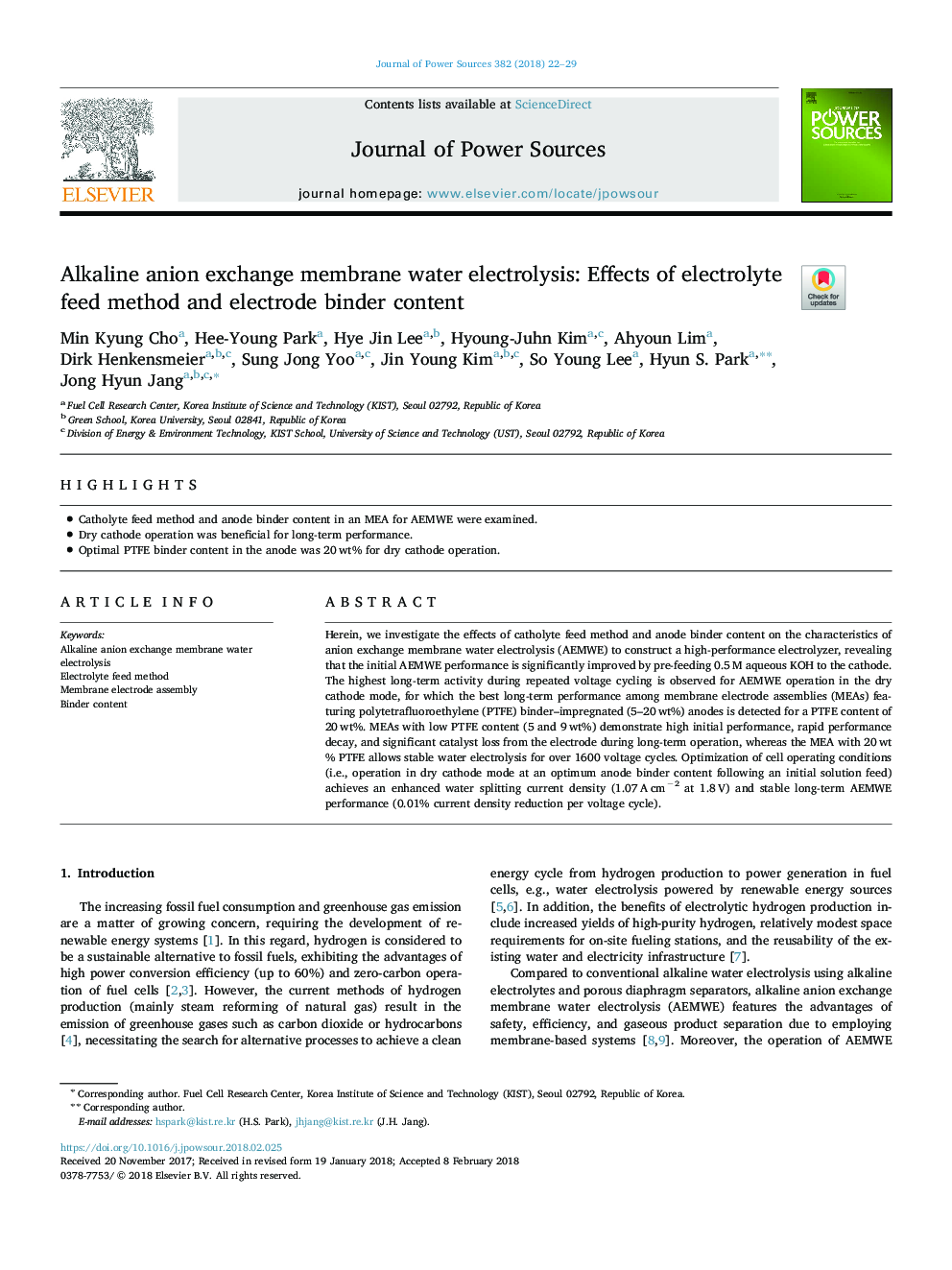| Article ID | Journal | Published Year | Pages | File Type |
|---|---|---|---|---|
| 7725485 | Journal of Power Sources | 2018 | 8 Pages |
Abstract
Herein, we investigate the effects of catholyte feed method and anode binder content on the characteristics of anion exchange membrane water electrolysis (AEMWE) to construct a high-performance electrolyzer, revealing that the initial AEMWE performance is significantly improved by pre-feeding 0.5â¯M aqueous KOH to the cathode. The highest long-term activity during repeated voltage cycling is observed for AEMWE operation in the dry cathode mode, for which the best long-term performance among membrane electrode assemblies (MEAs) featuring polytetrafluoroethylene (PTFE) binder-impregnated (5-20â¯wt%) anodes is detected for a PTFE content of 20â¯wt%. MEAs with low PTFE content (5 and 9â¯wt%) demonstrate high initial performance, rapid performance decay, and significant catalyst loss from the electrode during long-term operation, whereas the MEA with 20â¯wt% PTFE allows stable water electrolysis for over 1600 voltage cycles. Optimization of cell operating conditions (i.e., operation in dry cathode mode at an optimum anode binder content following an initial solution feed) achieves an enhanced water splitting current density (1.07â¯Aâ¯cmâ2 at 1.8â¯V) and stable long-term AEMWE performance (0.01% current density reduction per voltage cycle).
Related Topics
Physical Sciences and Engineering
Chemistry
Electrochemistry
Authors
Min Kyung Cho, Hee-Young Park, Hye Jin Lee, Hyoung-Juhn Kim, Ahyoun Lim, Dirk Henkensmeier, Sung Jong Yoo, Jin Young Kim, So Young Lee, Hyun S. Park, Jong Hyun Jang,
